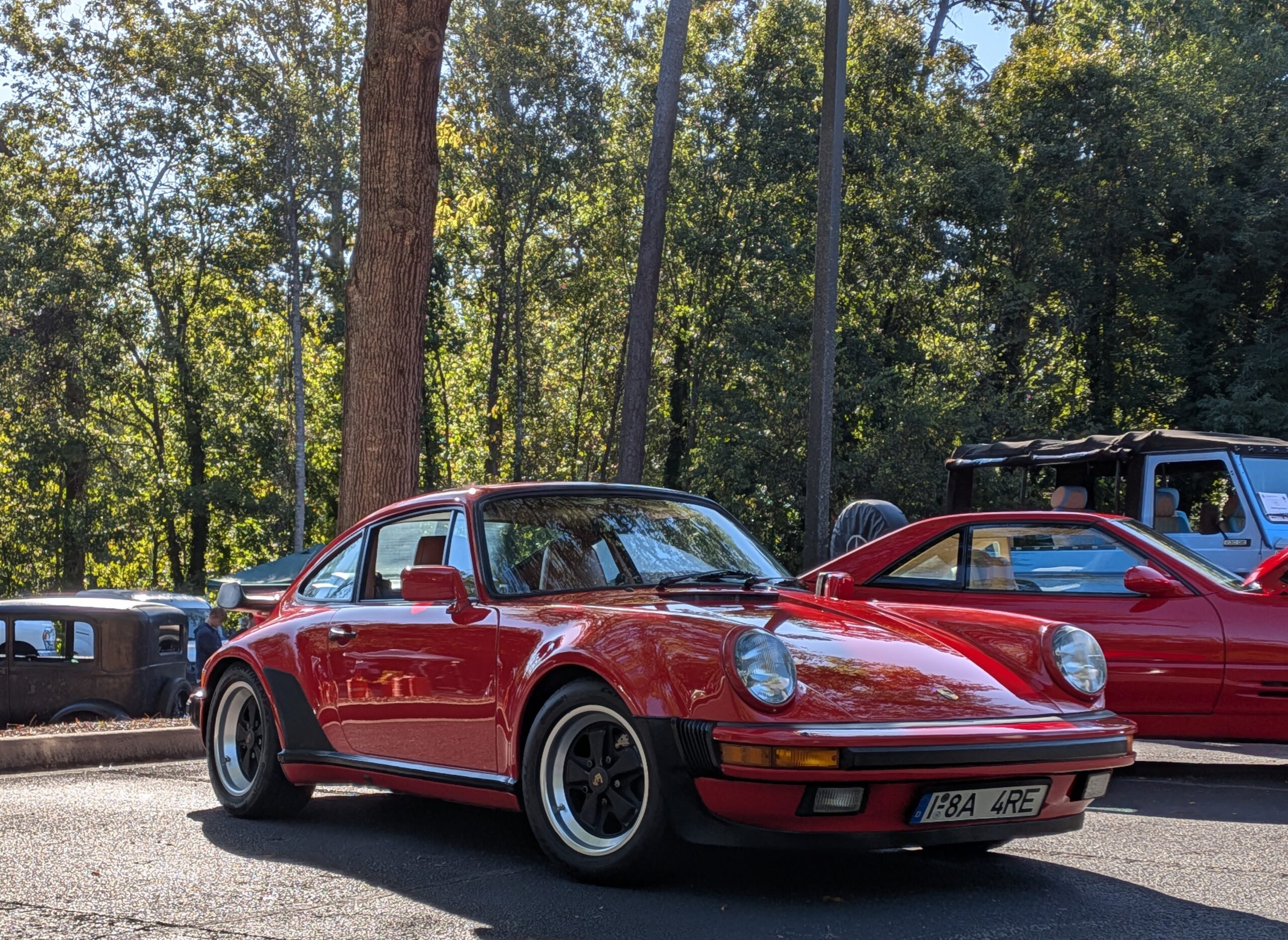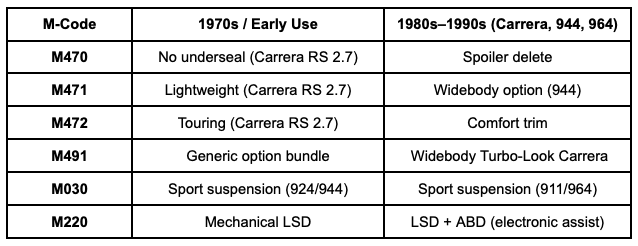
I’d been tracking Porsche’s M-codes for years, but it wasn’t until I discovered the M491 Turbo-Look wide body 911 that I really started digging in.
The M491 option transformed a standard Carrera into what looked like a 930 Turbo: flared fenders, wide wheels, Turbo brakes and suspension, but with the naturally aspirated engine. In many ways, the M491 wide body Porsche feels like the spiritual ancestor of today’s GTS models everyday usability with a heavy dose of motorsport DNA.

That single option code sent me down the rabbit hole. I quickly learned that Porsche’s M-codes weren’t just order sheet notes, they’re the hidden keys to understanding some of the brand’s most iconic cars.
What Are Porsche M-Codes?
The “M” in Porsche M-code comes from the German Mehrausstattung (special equipment). Beginning in the 1950s, Porsche assigned these codes to optional features, packages, and regional specifications.
Most were mundane: seat heaters, tinted glass, stronger batteries, but some defined entire models. That’s why enthusiasts still talk about M491 Turbo-Look or M471 Lightweight as if they were models unto themselves.
RS Cars and Their Codes
Even the legendary 1973 Carrera RS was defined by M-codes:
- M471 – Carrera RS Lightweight
- M472 – Carrera RS Touring
Collectors still use these codes to distinguish between multi-million-dollar RS variants. Without them, the difference between a track special and a road car disappears.
When M-Codes Change Meaning
What fascinated me most is that Porsche didn’t freeze each code forever. Some shifted over time:
- M470: On the RS 2.7, it meant “no underseal” (a weight-saving option). By the 1980s, M470 meant “spoiler delete” on wide body 911s like the M491 Turbo-Look.
- M491: Initially a catch-all for “special equipment,” later it became the shorthand for the Turbo-Look wide body Porsche (also marketed as the Supersport in the UK).
- M030: Always “Sport Suspension,” but the specific parts varied by model (Konis on 944, Bilsteins on 964, lower springs on 996).
- M220: A classic LSD in the air-cooled era, later integrated with electronic brake-based traction systems.
This code recycling is why checking the option sticker or COA matters. The same number can mean very different things depending on the decade.

Why M-Codes Matter
For collectors, M-codes are more than trivia. They separate a standard narrow-body Carrera from a rare M491 wide body 911, or a Carrera RS Touring from a Lightweight. For enthusiasts, they’re part of the storytelling that makes Porsche’s history so rich.
What started as ordering shorthand (M491, M471) has turned into a shared language among enthusiasts and historians. These codes define Porsche’s most desirable cars and keep fueling debates in forums and auction listings.
For me, it began with M491. But once you start decoding these numbers, you realize they aren’t just options. They’re the markers of Porsche’s evolution and the reason a “wide body Porsche” might mean something very different depending on which M-code it carries.